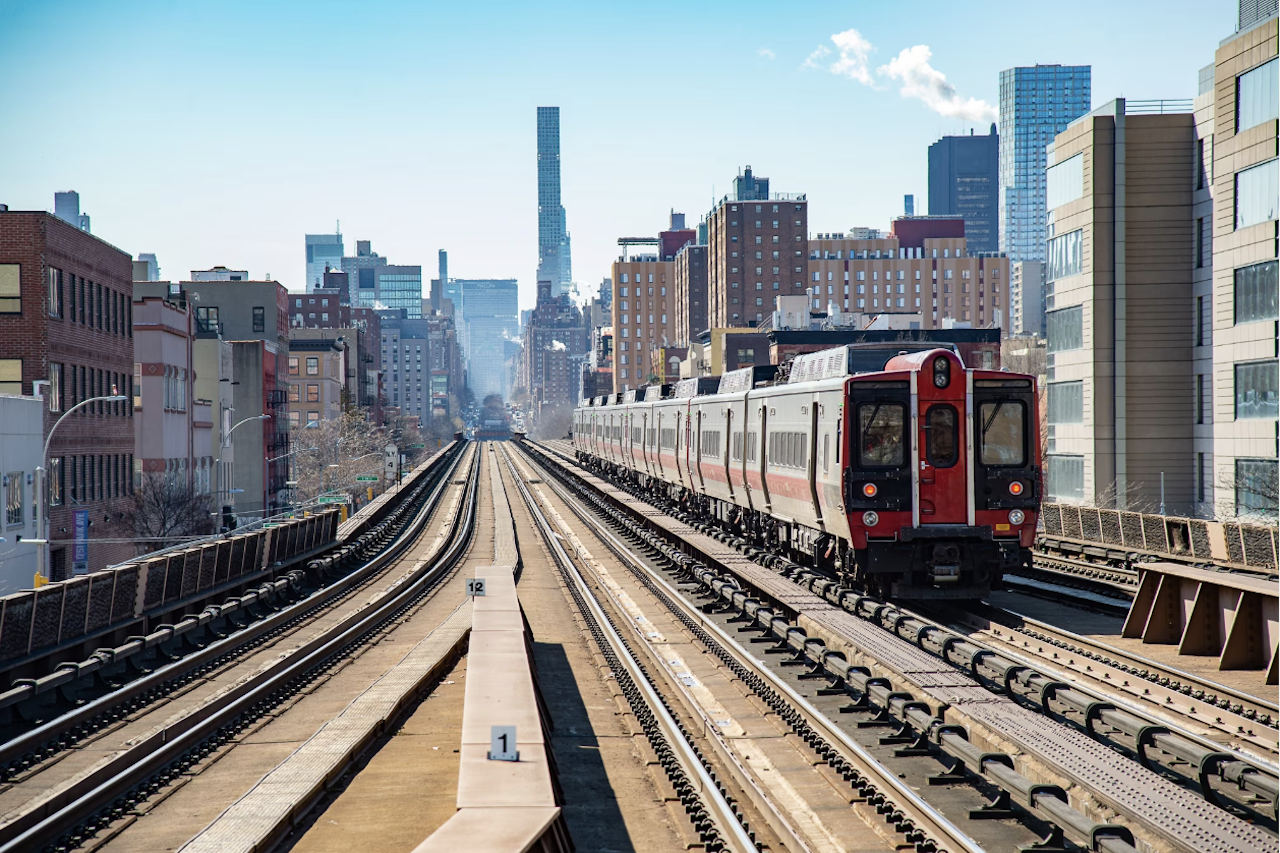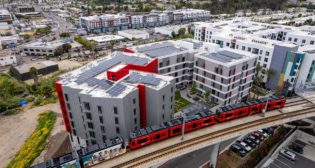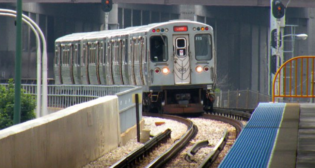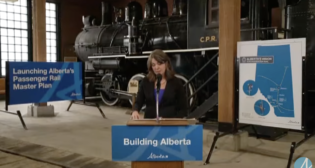
Transit Briefs: NYMTA, NJ Transit, Amtrak
Written by Carolina Worrell, Senior Editor
NYMTA photo
The New York Metropolitan Transportation Authority (MTA) launches OMNY on Hudson Rail Link, releases the results of the Fall 2023 Customers Count Survey, and receives approval to time delay emergency exits to fight fare evasion. Also, New Jersey state lawmakers advance a bill to establish an office representing customers’ interest following a proposed 15% fare hike by NJ Transit; and a new study predicts the significant economic impact of passenger rail in Ohio.
NYMTA
The New York MTA on Jan. 29 announced that the agency’s contactless payment system, OMNY, has expanded to the Hudson Rail Link, Metro-North Railroad’s connecting bus service in the Riverdale and Spuyten Duyvil sections of the Bronx. OMNY expanded to AirTrain JFK and the Roosevelt Island Tram last year.
According to MTA, Hudson Rail Link users will now be able to join riders of the other services to tap and go with their smart device with a digital wallet, such as phone or watch, or contactless credit or debit card, or OMNY card. As with New York City Transit’s (NYCT) subways and buses, OMNY will allow Hudson Rail Link users to participate in the MTA’s seven-day fare capping program. Customers’ first tap into the system will start a seven-day period in which customers will never pay more than $34, the cost of a weekly unlimited MetroCard. Customers will be charged $2.90 for their first 11 rides, $2.10 for their twelfth ride. The thirteenth and all subsequent rides are free for the rest of the seven days.
The Hudson Rail Link system connects 900 riders a day on eight routes to the Riverdale and Spuyten Duyvil Metro-North stations on the Hudson Line in the Bronx, helping the communities increase their access to Manhattan and Westchester, Putnam, and Dutchess Counties. Arrow Rail Link operates the service on behalf of Metro-North from 6:00 a.m. to 11:30 p.m. Monday through Friday with 16 buses.
“Riders in Riverdale and Spuyten Duyvil have been asking for OMNY on the Hudson Rail Link and today we’ve answered that call with the full rollout of the contactless payment system on this Bronx transit service,” said MTA Chair and CEO Janno Lieber. “Contactless fare payment remains the fastest way for subway, bus, and now Hudson Rail Link customers to pay their fares and move around the City and throughout the region.”
Additionally, MTA on Jan. 29 announced the results of the Fall 2023 Customers Count Survey, which launched on Nov. 6, 2023, and received responses from 108,000 customers, the largest participation since the first Customers Count Survey launched in fall 2021.
According to the agency, the results showed “increased overall satisfaction for Long Island Rail Road (LIRR) and Access-a-Ride (AAR) riders. All eight subway lines that increased service frequency, along with a few other lines, showed an improvement in line satisfaction.”
While overall satisfaction with subways dipped to 52% in fall 2023, down from 56% in spring 2023, scores in the following categories all increased from spring 2023:
- “Overall subway line satisfaction (58%), increased by four percentage points.
- “Overall station satisfaction (67%), increased by six percentage points.
- “Safety on trains (54%), increased by four percentage points.
- “Safety in stations (51%), increased by three percentage points.
- “Cleanliness on board trains (57%), increased by nine percentage points.”
It is important to note, MTA says, “that this contradicting trend signals a negative sentiment that many customers have for the subway overall, even if they believe their own line or station has improved. The survey results indicate this perception is related to quality-of-life issues in the system, such as homelessness, and a belief that service is unreliable.”
Nearly all subway lines show increases in line satisfaction over spring 2023. Notably, the E line and 42 Street S train went up 9 percentage points; the 1 went up by eight and the C went up by seven percentage points. Satisfaction with 3, 6, A, B, J, Z, M, N, R, G all increased by at least four percentage points.
According to MTA, having agents out of the booth has had a positive impact, with 70% of customers who interacted with a station agent saying they were satisfied with the interaction. “Customers who interact with agents outside of the booth feel better about the subway overall,” the agency said.
“Customers are rating their subway stations and lines better than in the past but seem to hold onto an overall negative perception of the subway system, and this is something we’re going to work on,” said MTA Chief Customer Officer Shanifah Rieara. “These results, invaluable insight for every agency, are proof as to why these surveys are so essential in our effort to understand what is working and what areas we can focus on to improve the customer journey.”
Separately, NYCT President Richard Davey announced at the Jan. 29 MTA’s Committee meeting that the agency has received approval to time delay emergency exits to fight fare evasion, according to a FOX 5 NY report.
According to the report, once a rider pushes the handle for the emergency exit, it will take 15 seconds before it opens. The pilot program will be installed at three stations—138th Street Station of the 6 train, Flushing Avenue Station along the J/M/Z lines and the 59th Street and Lexington Avenue subway stations.
Last year, Fox 5 NY reports, Davey himself was there to observe, as NYCT conducted a short experiment to see if putting a time delay on the emergency door could help, and it did.
“They kind of said whatever they said, and they walked around and went out the turnstile. So that’s the goal, to frustrate folks who you know might want to be using that as a matter of convenience, where you have a perfectly good turnstile next to it,” Davey said.
While the MTA has had the idea for some time, agency officials say it wanted approval from safety agencies before moving forward. Those waivers, MTA says, were received on Monday, according to the report.
NJ Transit
One day after NJ Transit announced a proposed 15% fare hike, a state Senate committee has advanced a bill that “would create a transit customer advocacy commission that one lawmaker said would have given the fare increase plan much-needed scrutiny,” according to a New Jersey Monitor report.
Sen. Raj Mukherji (D-Hudson), the bill’s sponsor, said “it doesn’t send the right message to NJ Transit riders that the state doesn’t have an independent voice to represent their interests.”
“We’re telling our most vulnerable citizens and all of our commuters that this isn’t a priority to us. I’m not suggesting I’m always opposed to fare hikes, but these fare hikes will not go through the analysis and need determination by someone looking out for riders,” Mukherji said.
According to the report, the bill would require “the creation of a rider advocacy commission that would establish an NJ Transit customer advocate office and appoint a rider advocate.” The commission would be part of the state Department of Transportation and would consist of three members, one each appointed by the governor, Senate president, and Assembly speaker. The rider advocate would report directly to the commission.
Under the bill, the New Jersey Monitor reports, “the customer advocate office would represent the interests of NJ Transit customers in areas, such as proposed fare increases, substantial decreases in services, and service expansions. The office would also be able to conduct independent investigations and studies and provide comments and feedback directly to the agency and legislators.”
According to the report, the bill’s supporters say, “it sends the right message but doesn’t go far enough.” Transit advocate David Pringle urged lawmakers to implement even more independent oversight to keep tabs on the “financially troubled” agency. “He noted NJ Transit is moving to new offices that will cost $440 million over 25 years, and he criticized the Murphy administration’s $2 billion Turnpike expansion plan, which critics say should be scuttled, with the funds used instead to expand mass transit.”
If approved, the 15% fare hikes proposed Jan. 24 would be the first fare increases at NJ Transit in nearly 10 years. The agency also called for annual fare increases of 3% going forward. If approved, the first round of fare hikes would take effect July 1.
Amtrak
A new study shows that a passenger rail could bring as much as $16 million in economic impact to the greater Columbus area ever year, according to a 10 WBNS news report.
According to the report, the results of the study come two months after the Federal Railroad Administration (FRA) approved funding for the planning of four Amtrak passenger rail routes across Ohio.
The economic impact study (download below), which was funded by the Columbus Foundation through a nearly $17,000 grant given to the nonprofit organization All Aboard Ohio in July, was released Jan. 24 by Scioto Analysis. The study, 10 WBNS reports, looks at the statewide effects of the proposed Cleveland-Columbus-Dayton-Cincinnati rail corridor, also known as the 3C&D Corridor.
Amtrak has proposed three new stations in the Columbus area that include Crestline, Delaware and downtown Columbus.
The study estimated the number of passengers who may use those stations and the range of revenue a passenger rail could bring to the cities. It showed that:
- “Between 3,500 and 7,100 passengers could use the Crestline station each year, bringing in between $600,000 and $1.2 million in ticket revenue.
- “Between 13,000 and 26,000 passengers could use the Delaware station each year, bringing in between $2.3 million and $4.6 million in ticket revenue.
- “Between 28,000 and 56,000 passengers could use the downtown Columbus station each year, bringing in between $6 million and $11 million in ticket revenue.”
The study estimates that the 3C&D Corridor “could have an ongoing economic impact of between $25 million and $47 million on the state of Ohio each year, with $14 million of that coming from transportation and warehousing, over $2 million from the finance and insurance sectors and just under $2 million from real estate, rentals and leasing.”
According to the report, Ohio is in the first of three phases in planning for the potential of a passenger rail. In the second phase, municipalities will have an opportunity to advocate for stops along the corridor.
One of those municipalities is Dublin, which is already working with the Mid-Ohio Regional Planning Commission (MORPC) to determine the feasibility of a station on Houchard Road, according to the report.



